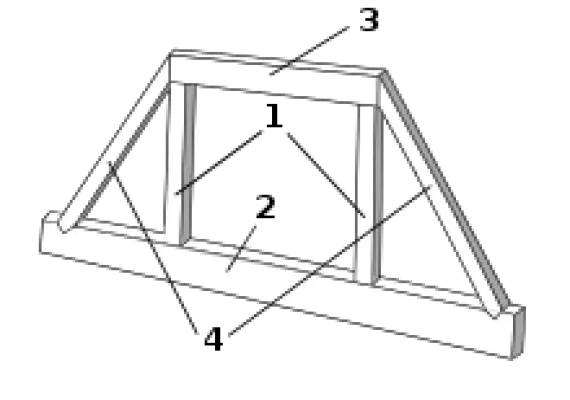What Is Post And Lintel Construction? Features Of Post And Lintel Construction
What Is Post And Lintel Construction?
Post and lintel is a fundamental building system in architecture, where strong horizontal elements such as lintels, headers, architraves, or beams are supported by vertical elements like columns, pillars, or posts, creating large open spaces beneath.
This system is commonly used to hold up roofs and is found in various architectural traditions including Neolithic, ancient Indian, Greek, Egyptian, Persian, Lycian, Japanese, traditional Chinese and ancient Chinese architecture, as well as Mayan and Inca architecture.
The earliest versions of this system were often made of wood but were later translated into stone for larger and grander buildings. Timber framing using trusses is still commonly used for smaller buildings today. The main disadvantage of post and lintel construction is the limited weight it can hold and the small distances required between posts.
The development of the arch in ancient Roman architecture allowed for larger structures to be built, which led to the arcuated system replacing post and lintel in most larger buildings and structures until the introduction of steel girder beams in the industrial era.
Despite this, trabeated features were often retained in buildings as an aesthetic choice, particularly in classical architecture where the Greek classical orders were retained to impress even though they had little or no structural role.
Features Of Post And Lintel Construction
Post and lintel construction is a simple design where vertical supports are placed in the ground or foundation, and a horizontal structure is placed on top. A good example of this type of construction is a doorway.
This method has been used not only for openings but also for frameworks. The horizontal structure is called a lintel which can take many forms such as a block of stone or metal reinforcement. The lintel’s main purpose is to hold weight and it can be used in tall buildings or heavy structures.
The vertical supports are called posts, which can be columns, poles or beams, modified to meet architectural designs.
Advantages Of Post & Lintel Construction
Post and lintel construction is a popular and efficient method for building structures. It involves using horizontal and vertical members to construct a structure making it a simple and easy process. One of the main advantages of this method is its fast construction time.
Using timber to construct houses can significantly decrease the time it takes to build a structure, making it ideal for light construction in hilly and mountainous areas.
Another advantage of post and lintel construction is its cost-effectiveness. The materials used, such as timber and concrete members, are easily available in many areas reducing the cost of construction. In the past, large stones were used which increased construction costs but with the availability of machinery and alternative materials, the cost of construction has been significantly reduced.
The construction process itself is also relatively easy and straightforward. This type of construction typically only involves one to two storeys, which reduces the complexity of the project. Additionally, it does not require skilled labor, making it possible to hire local labor at a lower cost.
Post and lintel construction also has a lower risk of damage in the event of an earthquake. The structural system used in this method reduces the dead loads of buildings, which in turn reduces the risk of any incidents during an earthquake. This type of construction is also found to be useful in areas that are prone to severe earthquakes.
Disadvantages Of Post & Lintel Construction
One disadvantage of post and lintel construction is that it is only suitable for low-rise buildings, such as one or two-storey houses. This type of construction is not suitable for high-rise buildings which require more advanced framing techniques to support the heavy loads of multiple stories.
Additionally, post and lintel construction has limitations in terms of weight and space. The vertical posts and the space between them cannot support heavy loads and the construction relies on light and low-strength members resulting in limited space between posts and a limited load capacity for the roof.

